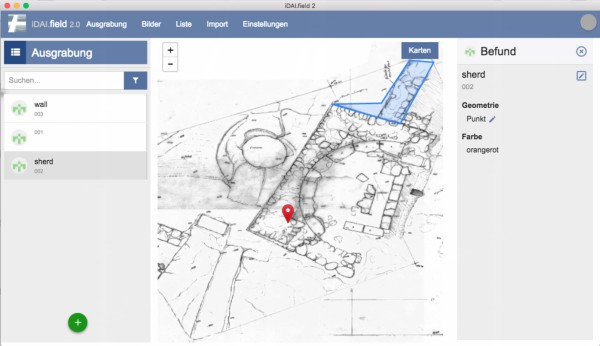Sebastian CUY1 | Philipp GERTH1 | Daniel de OLIVERA1 | Thomas KLEINKE2 | Jan WIENERS2
(1 Deutsches Archäologisches Institut, Berlin, Germany | 2 Deutsches Archäologisches Institut, Köln, Germany)
Keywords: database, GIS, documentation, field recording
Abstract:
An archaeological field research database that can be used for different projects poses an advanced technical problem. It does not only have to deal with different needs by a variety of disciplines and methods like excavation and survey but also be useable for architectural or object studies. Therefore, a generic data model is required, that can deal with most circumstances while also trying to maintain standardisation where possible. Another requirement is the ability to support distributed work and data entry in the field even in areas with no internet coverage. This creates the need for a very hardened synchronization between the various clients and to the server. As the use of GIS is still gaining importance in archaeological fieldwork, an additional focus lies on the integration of spatial data and descriptive documentation.
This paper presents iDAI.field 2.0, the field research documentation system by the German Archaeological Institute, which is currently being developed. This solution will be published as an Open Source software product that also relies heavily on OSS and web technologies. It makes use of CouchDB/PouchDB for data storage and synchronisation. The cross platform client application is realised with the Electron and Angular frameworks using TypeScript as the main programming language. The client also provides an open interface for import and export. This allows the integration of other fieldwork software like for example QGIS, iDIG and Survey2GIS into the toolchain.
Relevance conference / Relevance session:
Documentation systems are the fundamental basis for nearly any digital research. Therefore creating a robust software for field recording is the absolute basement!
Innovation:
To find the balance between schemaless data storage and standardization, beside komplex syncronization is pretty innovative for archaeology.
References:
Figure:



